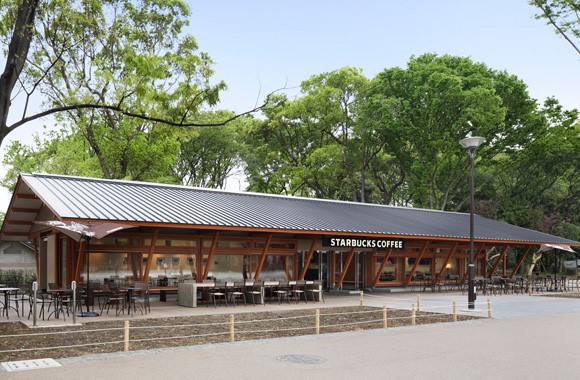


For the creation of a new open space where people can get together, the local government coordinated open-air dining spots through a unique two-step management system allowed by the revised Local Autonomy Act. In the first step, the government built two one-story houses (Photo 1 and 2) to be used for cafes inside the park by special permission from the governor. Meanwhile, the government designated a public interest incorporated association as the permitted operator of the new buildings. In the second step, the association contracted out the café operation to two private companies selected from 15 applicants through a competitive bidding process. Selection criteria of the operating companies included consistency to the park’s basic revitalizing plan as well as profitability and quality of services to be provided to park visitors. Notably, with this two-step management a part of the profit from these two cafes can be efficiently reinvested to maintain and upgrade the park environment.
- Designated Administrator System provided by the revised Local Autonomy Act of 2003
- Specifying an idea of dining spots in basic plans and obtaining a special permission for new profit-making activities in public park.
Urban park management under public-private partnership schemes is obviously effective and more governments may adopt the scheme to meet the local needs to improve urban parks. However, merely contracting out park operation and maintenance services to private companies does not ensure desirable results for users. Local governments should develop plans and principles for urban park management with the participation of local stakeholders and experts, and the contracted private sector should follow the plans and principles. It is also important to manage urban parks with local specific and creative ideas along with the promotion of new private enterprises and business clusters in surrounding districts to maximize the local benefits.